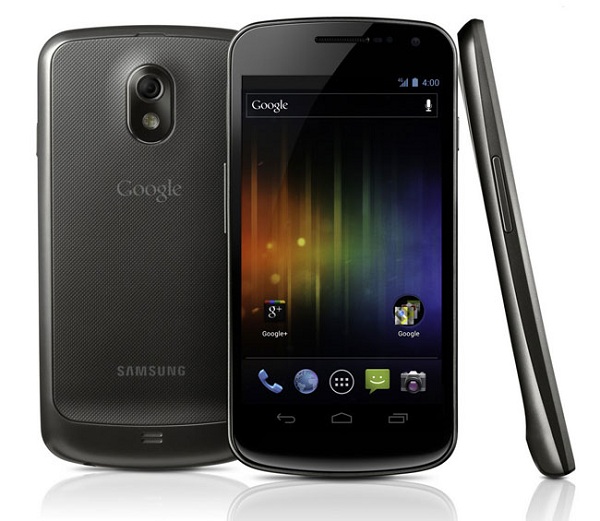Samsung changed the name of its latest Google phone from the anticipated Nexus Prime to Galaxy Nexus and officially announced the launch of this Android 4.0 mobile device for November.

The official announcement was supposed to be made on October 11, but Samsung and Google decided to delay that event, presumably as a sign of respect for Steven Jobs, who had recently passed away. However, the day has come when these two tech giants brought Samsung Galaxy Nexus in the spotlight.
It looks like some of the rumors about the next Google phone were very near to the truth. Samsung Galaxy Nexus comes with a 4.65 inch HD Super AMOLED display with a resolution of 1280×720, resulting in a pixel density of approximately 316 dpi, a bit lower than the expected 320 dpi in the scenario that included a 4.6 inch diagonal. There is no mention of Gorilla glass protecting the display, but the surface of the phone is said to be oleophobic, which simply means that it lacks a strong affinity for oils. In fewer words… goodbye, grease marks! Galaxy Nexus features multi-touch support, an accelerometer sensor for UI auto-rotate, touch sensitive controls, a proximity sensor and the obligatory three-axis gyro sensor. A barometer sensor and a digital compass are also added to the equation. Not at last, Galaxy Nexus also comes with NFC support, which makes it ideal for payments with Google Wallet. Thanks to Android Beam, a new feature introduced with Ice Cream Sandwich, NFC will also be used for transferring data.
The rumors oscillated between dual core 1.2 and 1.5 CPUs, but Samsung decided to use the former, which still provides plenty of processing power. The dual-core 1.2GHz Cortex-A9 CPU is paired with 1 GB of RAM, which should really be the industry standard these days, considering the requirements of the newest apps. In terms of internal storage, there will be two versions of Galaxy Nexus: one with 16GB and one with 32GB. In addition to that, the capacity is furthermore extended via a microSD slot that supports memory cards of up to 32GB, thus increasing the maximum storage to 64GB. The entire tandem is powered by a 1,750 mAh Li-Ion battery.
It was also rumored that the next Google phone would come with a 8.0 megapixel camera, but instead it only features a 5.0 MP auto-focus primary camera with face-detection capabilities, which is assisted by LED flash. The front facing camera, which will prove to be very useful for video calls, has a resolution of 1.3 MP. The secondary camera is a particularly good companion for the Google+ hangouts. Another interesting feature related to the primary camera is the ability to use live effects when shooting portraits. The single motion panoramic camera is also worth mentioning, as well as the video recording capabilities of the primary camera, in 1080p at 30 fps. Other interesting features related to video recording that have been included in Android 4.0 are:
- Snapshot while recording
- Timelapse
- Zooming while recording
In what concerns the connectivity options, Samsung Galaxy Nexus comes with everything you could wish for. Wi-Fi 802.11 a/b/g/n standards are supported, but in case you are not near a hotspot, you can rely on GPRS, EDGE, HSUPA, HSDPA and LTE for getting connected. Bluetooth 3.0 with A2DP support is also available, along with a microUSB port.
The UI was not customized by Samsung in any way, so this is truly a Google phone. Regarding the OS, Android 4.0, codename Ice Cream Sandwich, finally breaks the line between mobile phones and tablets. This version of Android is thus intended for both these devices and allows developers to create apps that can be used on multiple hardware configuration, with a single OS in mind. Some of the major new features include a new UI with live wallpapers, improved animations and transition effects, as well as multi-touch gestures. Multitasking has also been updated.
The lock screen has also been improved and the facial unlock will give people a lot of peace of mind. A screenshot utility has been included, fact that makes sharing particular screens a lot easier. Until now, users of Android devices had to use specialized apps or even Windows software such as My Mobiler in order to take screenshots. Some of the apps that have been updated include Gmail, Calendar and Gallery. The web browser is now able to save web sites that are later accessible offline. In addition, it is now possible to browse web pages incognito. Other apps and features that have been updated or newly introduced include:
- Data usage control and monitoring
- Enhanced spell checking
- improved voice and text input
- New favorites tray and homescreen folders
- New Peoples app
- Notification menu
- Visual voicemail
- Wi-Fi Direct and Bluetooth HDP
Considering the great number of innovations this OS brings into play, the devices that will run Ice Cream Sandwich will represent some really fierce competition for the Apple products. Samsung Galaxy Nexus is only the first example.
If you liked this post, please check the Nexus Prime rumors and Samsung Galaxy Note.










